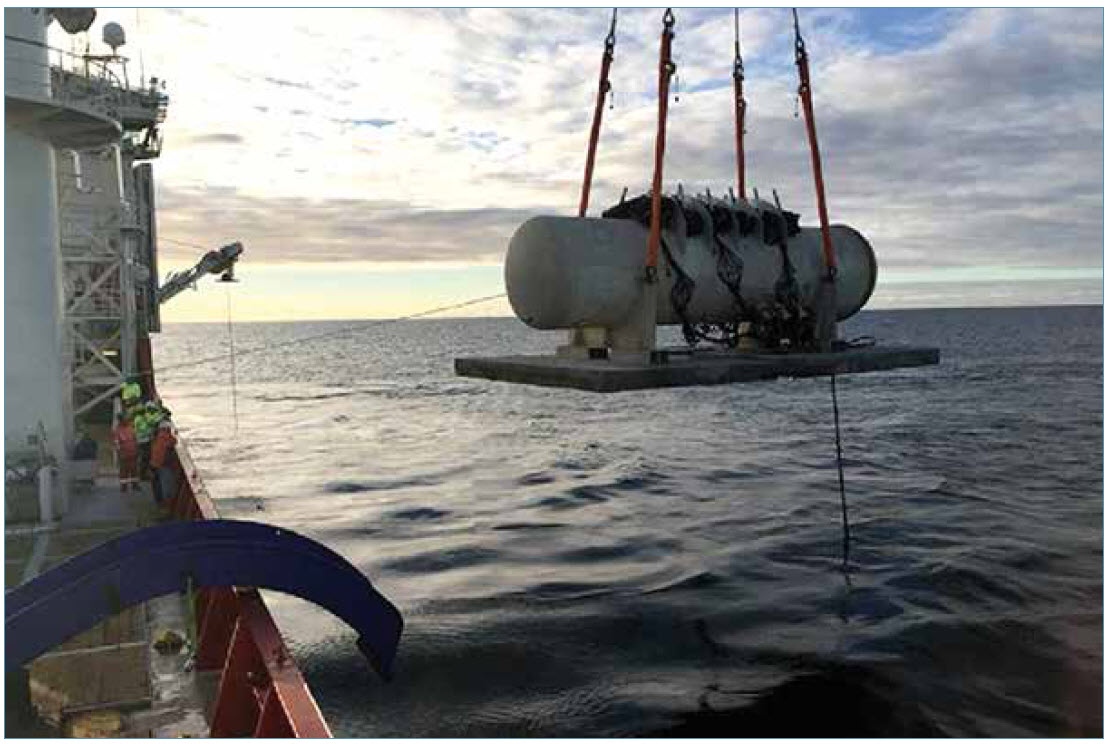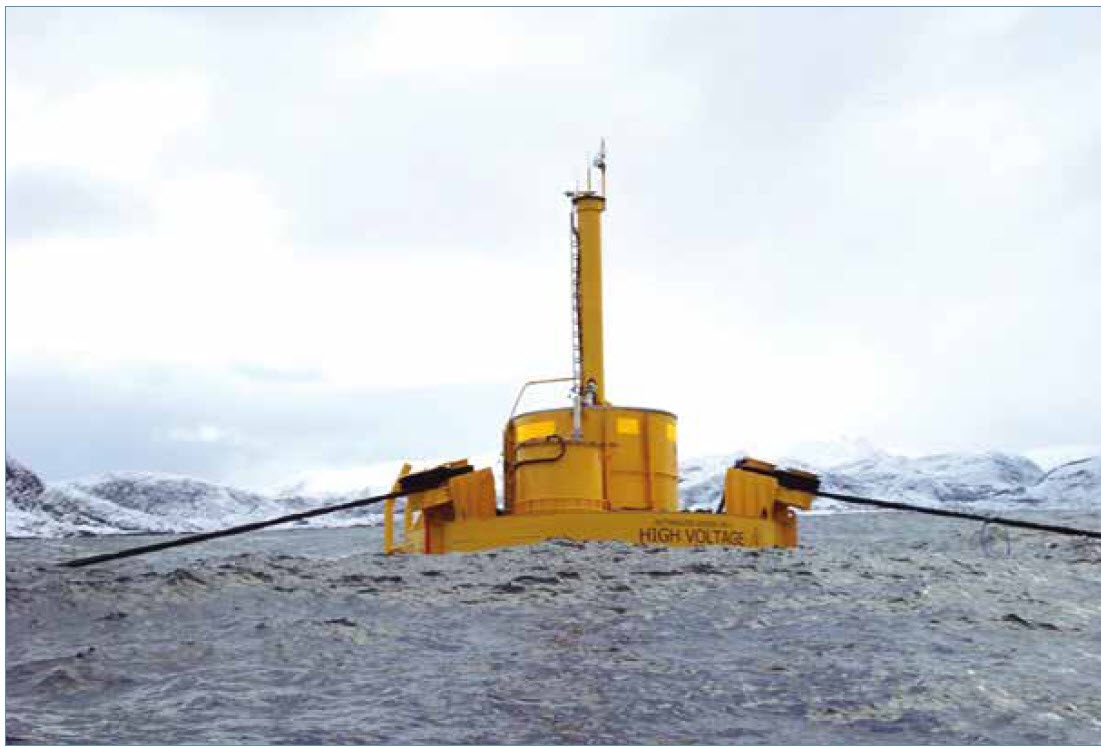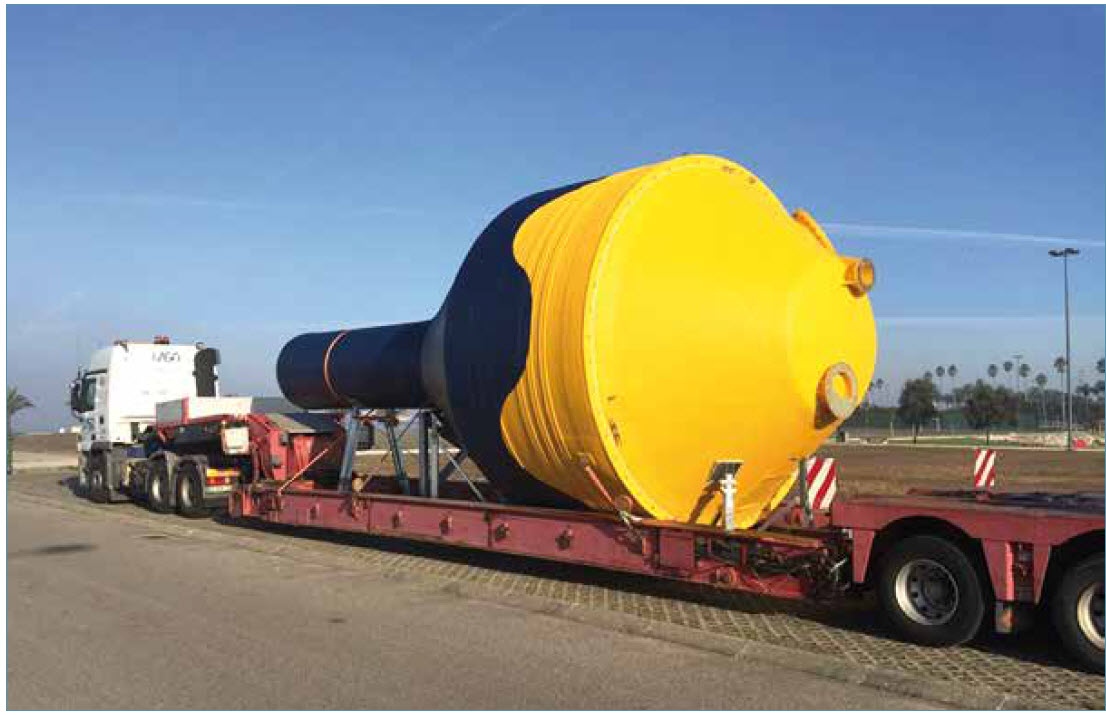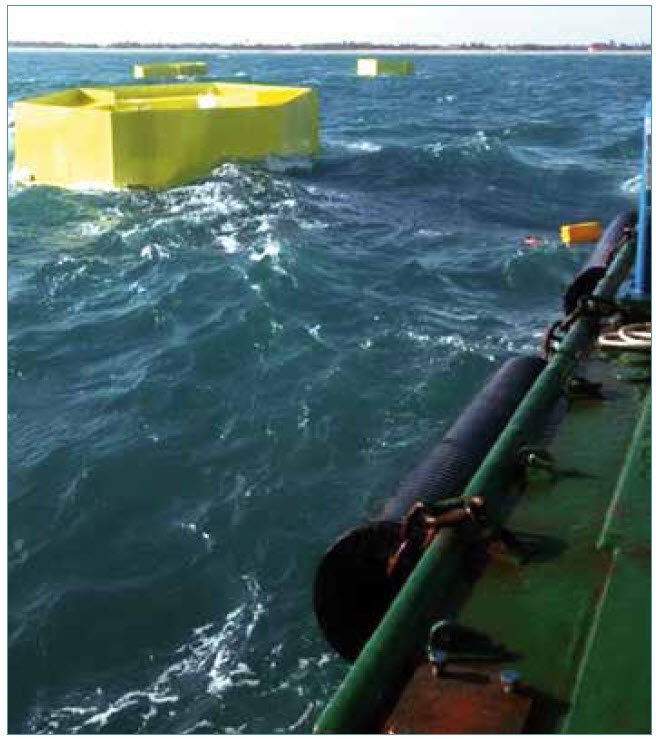SWEDEN
TECHNOLOGY DEMONSTRATION
OPEN SEA TEST SITES
The Lysekil wave energy research test site: The wave energy research group at Uppsala University tests full scale devices and technology solutions at a research test site outside the town Lysekil at the west coast of Sweden. At the site, not only the wave energy technology is studied, but also how a wave energy park may influence the local marine environment. A Datawell Waverider wave measuring buoy was installed in 2004 and measures the waves at the site continuously. The first full scale wave energy device was installed in 2006. Since then, a large number of wave energy generators, buoys, marine substations and various wave energy technologies have been deployed and studied in a long series of experiments at the site. The test site has been grid connected since November 2015.
OPERATIONAL PROJECTS
The only projects executed in Sweden and operational are the Lysekil wave power project, Söderfors marine current project and Sotenäs project.
Lysekil wave power site and Söderfors marine current site are operated by Uppsala University. At the Lysekil site preparations have been made during 2016 for next year´s grid connection of three wave energy converters. If successful, it will be the first time the group has an array of wave energy converters connected to the grid. Environmental studies have also been completed including measuring and tagging of crustaceans at the wave power test area and control areas and status of colonization of fish and crabs. Further on, an active acoustic system for subsea environmental monitoring of marine energy technologies and farms has been tested.
At Söderfors site, the turbine blades have been changed during 2016 and the vertical marine current converter has been grid connected.
The Sotenäs Project was initiated in November 2011 and 36 wave energy converters (corresponding to 3 MW) has been deployed along with the subsea generator switchgear. The wave power plant was initially grid connected in January 2016. The Sotenäs Project is funded by the Swedish Energy Agency, the power company Fortum and by Seabased Industry AB. The technology is based on a point absorber connected to a linear generator on the sea bed.

Deployment of the low voltage marine substation in the Sotenäs project
Waves4Power is another Swedish company demonstrating one full scale wave power device at sea; however the demonstration takes place in Runde, in Norway. Grid connection is planned to be completed in 2017.

Waves4Powers buoy demonstrated in Runde, Norway
PLANNED DEPLOYMENTS
The deployments that are planned in the near future will take place outside Sweden:
Minesto develops a technology called Deep Green that can produce electricity from low velocity tidal and ocean currents. The technology has been tested with scale model prototypes at the company’s test and demonstration facilities in Strangford Lough, Northern Ireland, since 2011. This testing has been successfully continued during 2016, as Minesto demonstrated test results which surpassed noted maximum levels of electricity generation. During the year, great progress has been made in design and control system.
In 2017, Minesto plans to build and commission the first demonstrator of the Deep Green technology at commercial scale. The device will be installed at Minesto’s site in Holyhead Deep, some 8 km outside the coast of northern Wales.
In Holyhead Deep, for which Minesto holds an Agreement for Lease from the Crown Estate, the company will gradually expand installed capacity to a 10MW commercial array (20 Deep Green units). Minesto has received funding from KIC Innoenergy and European Regional Development Fund through the Welsh Government.
CorPower Ocean develops compact high efficiency Wave Energy Converters, inspired by the pumping principles of the human heart. The company is headquartered in Stockholm, with activities in Sweden, UK, Norway and Portugal.
CorPower Ocean is currently performing its Stage 3 pilot programme. This entails taking a 1:2 scale Wave Energy Converter through the next step of structured verification by dry testing it in a Hardware-in-the-loop rig in Stockholm from late 2016 until mid-2017, followed by wet testing at EMECs Scapa Flow nursery site in Orkney, Scotland, through 2017.
The project is funded by the Swedish Energy Agency, KIC Innoenergy, and Wave Energy Scotland. CorPower has also received funding through ForeSea, an Interreg project by the European Commission for an extended period of ocean testing. Stage 3 development and verification activities are supported by best practice from the European Marine Energy Centre (EMEC) in Orkney, alongside the experience from offshore power generation company Iberdrola Engineering and EDP, the University of Edinburgh, NTNU, in Trondheim, and WavEC Offshore Renewables in Lisbon.

Stage 3 of CorPower’s device (in composite hull)
|
Seabased has signed a contract for a wave energy park in Ghana. The Ada Project in Ghana was initiated in November 2014 and the first wave energy converters and switchgear have been delivered to Ghana and are under installation. The wave power plant is the first step in a facility that when completed is planned to reach 200 MW. |
 |



